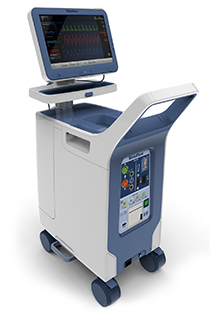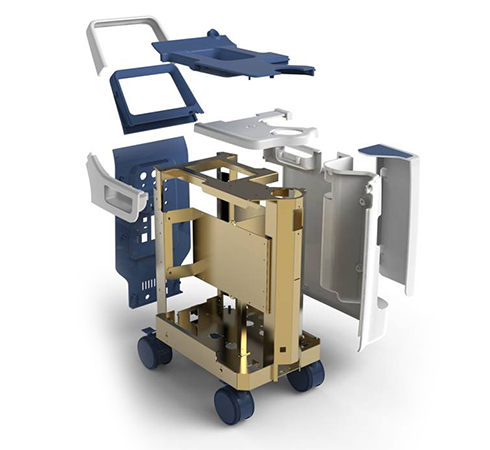



Medical Carts are often the best solution for supporting clinicians’ highly mobile workflows, allowing patients to be treated wherever they may reside in healthcare facilities. However, that very mobility also introduces significant risks to equipment and user alike that must be carefully considered and dealt with in order for medical cart-based equipment to be used with effectiveness, efficiency, and satisfaction.
Our user-centered design process ensures the right mobile solution is specified and developed while sufficing regulatory concerns, pleasing users, and mitigating risks.
For the third generation of their AutoCat IABP cart Teleflex wanted to maintain their position as being class leader, but make their cart even easier to use and transport.
IABP’s (intra-aortic balloon pump) are used to help the heart when a patient is receiving cardiac care. Often they may need to be moved to a larger hospital for care or to receive a heart transplant. This means that the cart has some unique requirements.
The AC3 was designed around the existing chassis for the AutoCat2, but everything else changed, with new internals, control panels, and it had to be even easier to transport. We designed a new cart to be easy to reconfigure – the screen, handle and pole mount can be removed easily to fit into an ambulance or medflight while still being fully functional.
A full size mock up was made from 3D printed parts so we could check the ergonomics with end users in a variety of scenarios that the unit might be used in, as well as checking for stability with the screen in the extremes of its range of motion.
For a large device such as this, with unique requirements for ruggedness, we chose to injection mold the panels with a PC/ABS material. Designing something this big requires a good knowledge of the molding process to ensure everything will fit together, with good surface finish and still meeting requirements for UL 94 (the Standard for Safety of Flammability of Plastic Materials for Parts in Devices and Appliances).